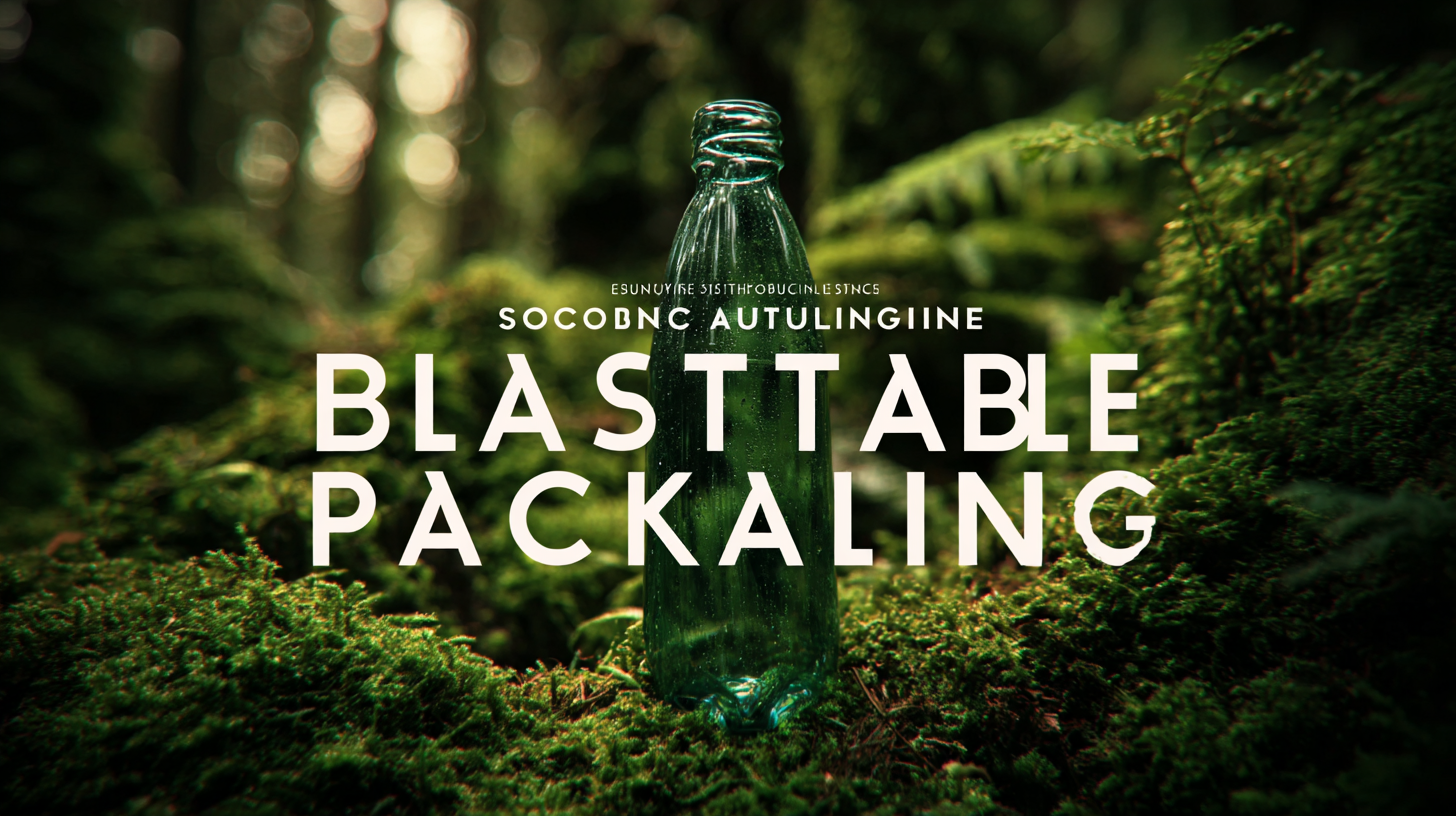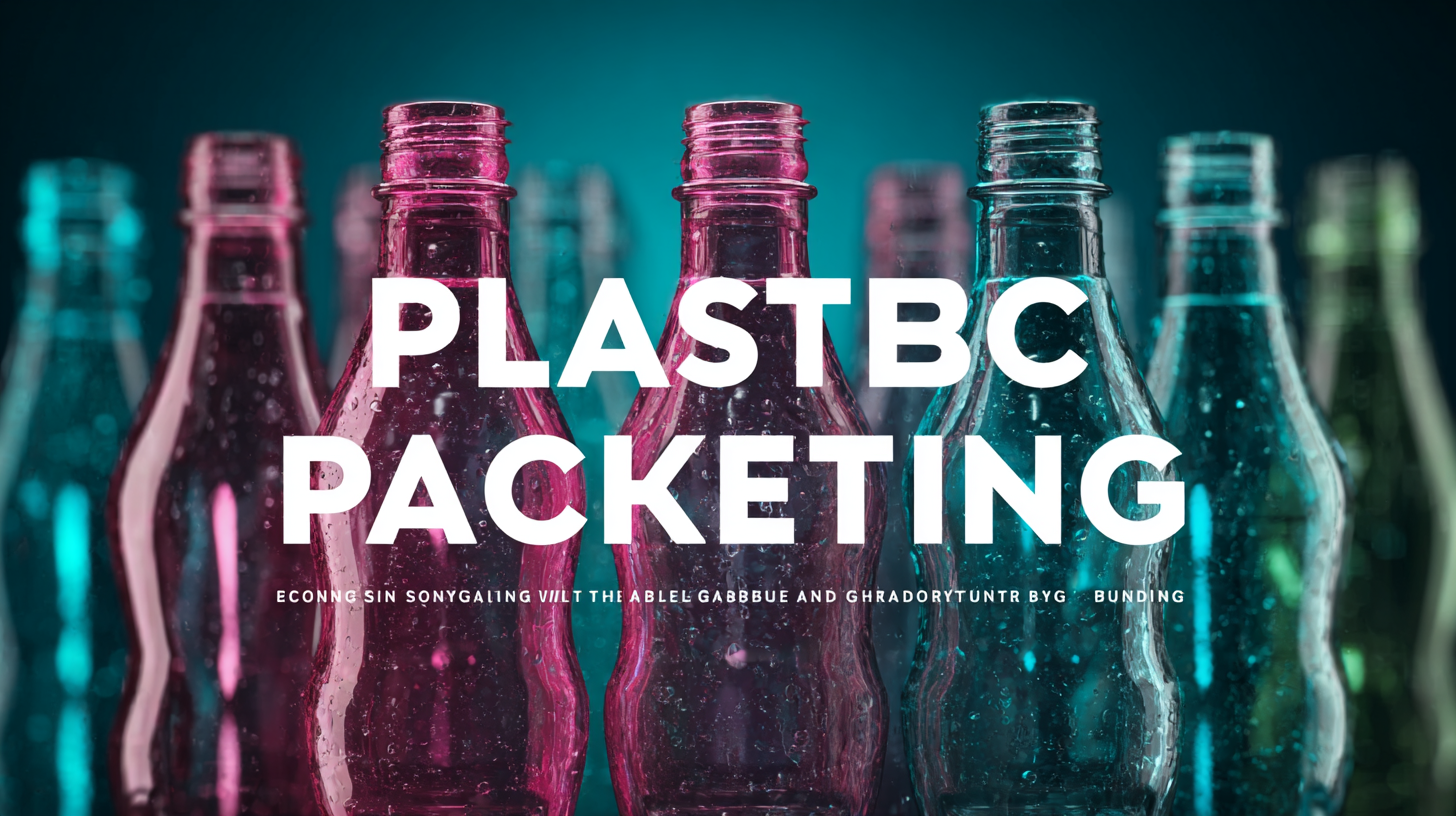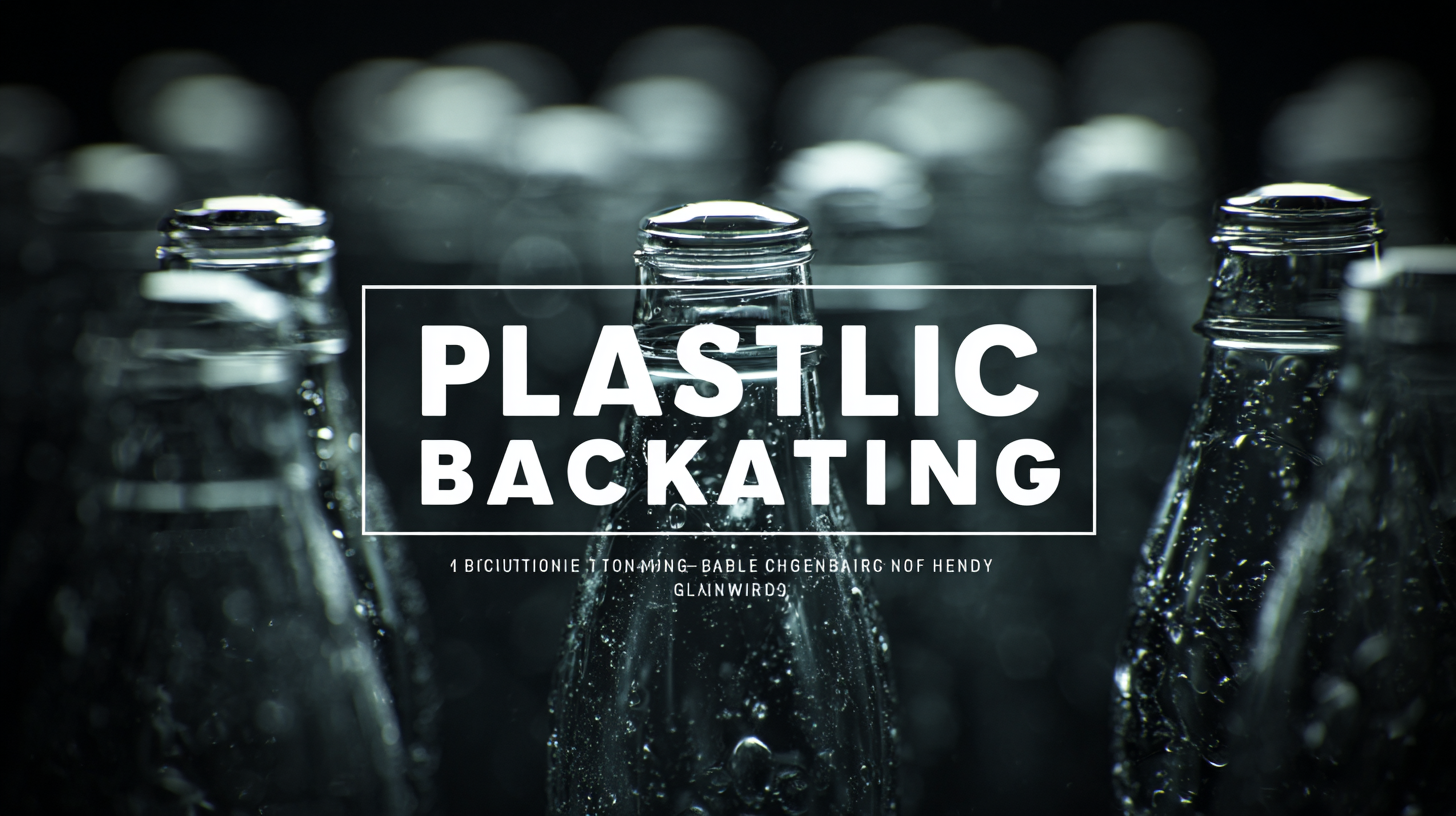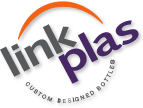Exploring Sustainable Alternatives to Traditional Plastic Bottle Packaging for Global Buyers
As the world grapples with the escalating environmental crisis, the packaging industry is under increasing scrutiny, particularly concerning Plastic Bottle Packaging. Reports indicate that approximately 1 million plastic bottles are purchased every minute globally, with only 9% being recycled effectively, leading to alarming levels of pollution and waste (Statista, 2021). This unsustainable trajectory highlights the urgent need for global buyers to explore sustainable alternatives. By opting for innovative packaging solutions, companies can significantly reduce their ecological footprint while meeting consumer demand for environmentally friendly products.

Understanding how to select high-quality manufacturers who prioritize sustainability is crucial in this transformative journey. This blog will delve into the approaches buyers can take to find reliable sources that offer eco-conscious packaging options, thereby contributing to a more sustainable future.
Identifying High-Quality Manufacturers for Eco-Friendly Packaging Solutions
When considering sustainable alternatives to traditional plastic bottle packaging, it's essential to identify high-quality manufacturers who prioritize eco-friendly solutions. With growing consumer awareness about environmental issues, collaborating with manufacturers who use renewable materials and sustainable practices can significantly enhance your brand's reputation. Look for companies that offer certifications such as FSC (Forest Stewardship Council) or other eco-labels, ensuring their processes adhere to environmentally responsible standards.
Tips for finding reliable manufacturers include conducting thorough research and reviewing their production transparency. Request samples to evaluate the quality of their materials and ensure they meet your specifications. Additionally, explore their commitment to continuous improvement in sustainability—check if they have initiatives for reducing waste or energy consumption within their operations.
Another effective strategy is to engage with industry networks and trade shows focused on sustainable packaging. These events often feature innovative manufacturers showcasing the latest eco-friendly technologies. Building relationships with these contacts can lead to fruitful partnerships and help you navigate through various packaging solutions that align with your sustainability goals.

Key Factors to Consider When Evaluating Sustainable Packaging Suppliers
As global buyers increasingly seek sustainable packaging solutions, evaluating potential suppliers becomes paramount. The rapid growth of the fast-moving consumer goods (FMCG) packaging market, projected to reach $1.34 trillion by 2032, creates a fertile ground for innovative packaging alternatives. When assessing sustainable packaging suppliers, buyers should focus on various critical factors, including material sourcing, environmental impact, and production processes.
Sustainable packaging is not just about using eco-friendly materials; it also involves understanding the entire supply chain. Companies should scrutinize how suppliers manage waste, energy consumption, and labor practices to ensure that their sustainability claims are genuine. Moreover, the rise of reusable bottle markets and the increasing emphasis on recycling underscore the importance of selecting suppliers who prioritize circular economy principles. By aligning with suppliers who are committed to sustainability, brands can significantly enhance their ecological footprint while meeting consumer demand for responsible products.
Exploring Sustainable Alternatives to Traditional Plastic Bottle Packaging for Global Buyers - Key Factors to Consider When Evaluating Sustainable Packaging Suppliers
| Factor | Sustainable Material Types | Recyclability | Carbon Footprint (gCO2e/bottle) | Cost ($/unit) | Supply Chain Transparency |
|---|---|---|---|---|---|
| Material Source | Biodegradable PLA | Yes | 23 | 0.50 | High |
| Material Source | Recycled PET | Yes | 35 | 0.40 | Medium |
| Material Source | Glass | Yes | 47 | 0.80 | Low |
| Material Source | Plant-Based Packaging | Yes | 15 | 0.70 | High |
| Material Source | Aluminum | Yes | 20 | 0.90 | Medium |
A Comparative Analysis of Popular Eco-Friendly Bottle Alternatives
As global consumers increasingly prioritize sustainability, the shift from traditional plastic packaging to eco-friendly alternatives has gained significant momentum. The pharmaceutical plastic bottles market is projected to reach a valuation of $11.7 billion by 2024, with a CAGR of 4.7% from 2025 to 2034. This increasing demand for sustainable packaging solutions underscores the industry's commitment to exploring materials that are child-resistant and environmentally friendly.
Similarly, the glass and aluminum container packaging market is anticipated to grow, with an expected market value of $90.3 million in 2024 and a CAGR exceeding 5.1% through 2034. This growth is largely driven by the rising demand for sustainable packaging, which not only meets regulatory demands but also aligns with consumer preferences. Additionally, the beverage container market, projected to be valued at $245.4 billion by 2024, will likely see a CAGR of over 5.2%, as alcohol consumption trends lean towards eco-friendly packaging options.
The cannabis packaging sector is also thriving, having an estimated market value of $23.73 million in 2024, forecasted to experience a remarkable CAGR of 12.4% driven by the rising emphasis on sustainable options. With these promising indicators across various industries, it's clear that the transition to innovative, sustainable packaging solutions is becoming crucial for global buyers and manufacturers alike.

Understanding Certifications and Standards for Sustainable Packaging
In the quest for sustainable packaging solutions, understanding certifications and standards is crucial for global buyers seeking to minimize their environmental footprint. Various certifications, such as the Forest Stewardship Council (FSC) and Cradle to Cradle Certified, provide assurance that products meet rigorous environmental and social criteria. The FSC certification ensures that materials sourced for packaging come from responsibly managed forests, while Cradle to Cradle takes a holistic approach, assessing the entire lifecycle of the product in terms of material health, recyclability, and renewable energy usage.
Buyers must also become familiar with standards like ISO 14001, which outlines the requirements for an effective environmental management system. This standard helps organizations improve their environmental performance through efficient resource use while minimizing waste. Additionally, the European Union's EcoLabel serves as a trusted mark that identifies environmentally friendly packaging options, guiding consumers towards more sustainable choices. As the demand for eco-friendly alternatives grows, buyers equipped with knowledge about these certifications and standards can make informed decisions that align with their sustainability goals.
Case Studies: Successful Brands Transitioning to Sustainable Bottle Packaging
As sustainability becomes a critical focus across industries, several brands are leading the charge by transitioning from traditional plastic bottle packaging to innovative, eco-friendly alternatives. A recent report by the Ellen MacArthur Foundation highlights that approximately 1 million plastic bottles are purchased every minute globally, emphasizing the urgent need for sustainable solutions. Brands like Coca-Cola and PepsiCo are paving the way by committing to using at least 50% recycled content in their PET bottles by 2030, a move that could significantly decrease plastic waste entering the environment.
In another remarkable case, Unilever has introduced its "Love Beauty and Planet" line, featuring bottles made from 100% recycled plastic. This initiative not only enhances brand loyalty among environmentally conscious consumers but also aligns with the growing trend; according to a Nielsen report, 66% of global consumers are willing to pay more for sustainable brands. Such shifts in packaging not only reflect a commitment to environmental health but also promise long-term business sustainability, showcasing that eco-conscious practices can go hand in hand with profitability.
Exploring Sustainable Alternatives to Traditional Plastic Bottle Packaging
This bar chart illustrates the percentage of sustainable packaging adoption across various industries, highlighting the shift towards eco-friendly alternatives over recent years.
CONTACT US
|
